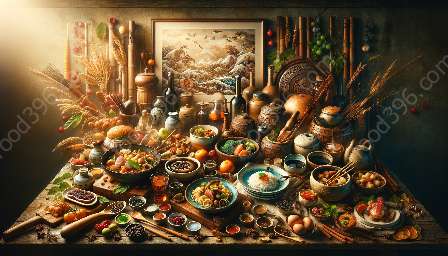Fusion cuisine is a remarkable reflection of cultural exchange, representing the dynamic interplay of culinary traditions from diverse cultures. This unique culinary phenomenon encapsulates the blending of ingredients, cooking techniques, and flavors from different cultural backgrounds, resulting in innovative and delectable dishes that celebrate diversity and creativity.
Understanding the history and evolution of fusion cuisine allows us to appreciate its role as a symbol of cultural integration and confluence. Exploring the interconnectedness of food and culture provides valuable insights into the rich tapestry of global culinary heritage and the profound impact of cultural exchange on the world's gastronomic landscape.
Fusion Cuisine History
The history of fusion cuisine can be traced back to ancient trade routes, where the exchange of goods and ideas facilitated the cross-pollination of culinary practices. The Silk Road, for instance, served as a conduit for the dissemination of spices, ingredients, and cooking methods across Asia, the Middle East, and Europe, giving rise to innovative culinary fusions.
As global exploration and colonization expanded in the modern era, fusion cuisine experienced significant evolution, with the merging of ingredients and culinary techniques from different continents. The fusion of European, African, Asian, and Indigenous American culinary traditions led to the emergence of diverse and eclectic cuisines, such as Latin American fusion, Afro-Asian fusion, and Indo-Mediterranean fusion.
Cuisine History
Understanding the history of individual cuisines is crucial in comprehending the foundations of fusion cuisine. For example, the history of Chinese cuisine, characterized by its emphasis on balancing flavors and textures, has profoundly influenced fusion dishes worldwide.
Similarly, the rich culinary heritage of India, with its aromatic spices and vibrant regional variations, has permeated fusion cuisine, contributing to its diverse and bold flavor profiles.
Another influential culinary tradition is French cuisine, renowned for its emphasis on classic techniques, sauces, and delicate flavors. This influence can be seen in fusion dishes that incorporate French cooking methods with ingredients from other cultural traditions.
When we examine the history of Italian cuisine, we uncover the roots of beloved ingredients such as pasta, tomatoes, and olive oil, which have become integral components of fusion cuisine, transcending cultural boundaries and enhancing global culinary experiences.
Cultural Exchange and Fusion Cuisine
Cultural exchange plays a pivotal role in the development of fusion cuisine, serving as a catalyst for cross-cultural gastronomic innovation. The interplay of diverse culinary traditions fosters a spirit of openness, creativity, and mutual appreciation, laying the foundation for the continual evolution of fusion cuisine.
Furthermore, the globalization of food has accelerated the exchange of culinary knowledge and practices, leading to a fusion renaissance that celebrates and respects the authenticity of diverse cultural foodways while embracing experimentation and fusion.
As a reflection of cultural exchange, fusion cuisine embodies the interconnectedness of human experiences, transcending geographical boundaries to create a collective tapestry of flavors and culinary narratives. It serves as a tangible expression of multiculturalism, encouraging dialogue, understanding, and unity through the universal language of food.

